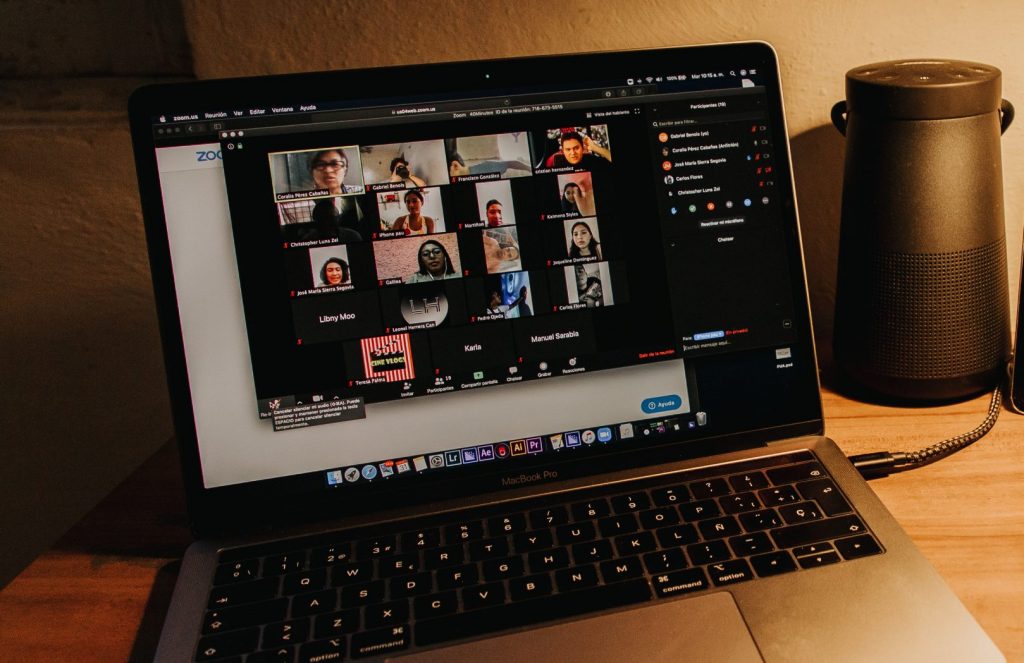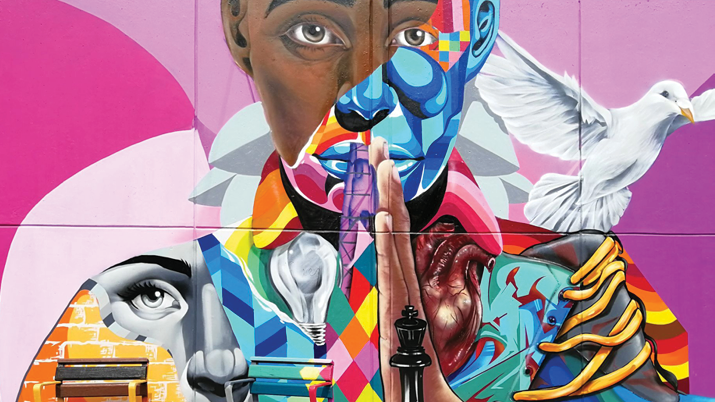

“The pandemic has prompted the university to rethink fundamental questions surrounding higher education and to take a fresh look at teaching and learning with new eyes.”
UBC’s transition to remote teaching and learning in response to COVID-19 was extremely complex, taxing and stressful for instructors and students. While the Department of French, Hispanic and Italian Studies (FHIS) works extremely hard to ensure the best possible experience for students in the fall, faculty share their reflections on the transition so far—from the unique challenges brought about by this radical transformation, to their hopes for the future.
Interview respondents include Drs. Luisa Canuto (Instructor of Italian), Juliet O’Brien (Lecturer of French), Brianne Orr-Álvarez (Instructor of Spanish) and Iris Escuer Riera (Lecturer of Spanish).
Adapting to Unprecedented Times


Main Mall looking emptier than usual in UBC Vancouver campus.
“For weeks, the world had been watching the latest details of the virus unfold. The inevitability of moving courses online had dawned on me by then, but it didn’t become real until March 13th, when I arrived to half-filled classrooms and students letting me know they didn’t feel comfortable attending face-to-face classes anymore,” says Brianne Orr-Alvarez, reflecting on the rapid transition from in-person to online course delivery in response to COVID-19.
“This drastic shift meant that instructors and students had to quickly adapt to an entirely different pedagogical framework and code, while aiming to achieve the same learning outcomes outlined at the start of the term. The positive attitudes of students, and their appreciation for our attempts to transition as quickly as possible without causing unnecessary stress or discomfort, made the process much smoother.”
Interpersonal Connection in the Digital Sphere


“Students have shown an astonishingly high level of commitment and participation when working online. They have even created virtual communities amongst themselves in which they support one another and maximize their learning experience.”
Virtual Interaction
When it comes to facilitating interpersonal connection through virtual means, Iris Escuer Riera remains optimistic:
“Students have shown an astonishingly high level of commitment and participation when working online. They have even created virtual communities amongst themselves in which they support one another and maximize their learning experience.”
Online platforms such as Canvas, Collaborate Ultra, and Whiteboard have made these virtual communities possible through real-time chat functions, videoconferencing capabilities, discussion forums, and the ability to split students into “breakout rooms” that instructors can visit.
Juliet O’Brien reassures students: “Your classes will not be the kind of distance course where you do lots of exercises and practice alone on your own time, producing work that gets marked by a faceless, anonymous, impersonal entity. There will be just as much interaction as before, if not more.”
Inclusivity
For a variety of students, this has made in-class participation more inclusive.
“Online text-based discussions allow people to carefully formulate what they want to say before they say it. It gives voice to people who might not otherwise be comfortable with speaking up in class. It also puts more emphasis on the idea rather than the appearance of self-assertion,” explains Juliet. “Online text-based discussions are also potentially more inclusive for students with disabilities who use text-to-voice software and vice versa.”
Iris adds, “Since the virtual ‘breakout rooms’ are set up randomly, students have the opportunity to interact with a greater variety of classmates than they usually do in a regular class setting. Students with high anxiety can participate by writing their comments and concerns in private chats, or by disabling their cameras when videoconferencing.”
Generating Engagement
While disabling their cameras can be comforting to some, it does pose challenges for instructors.
“Teaching is an improvisational ‘performance art’ that feeds on audience response and participation,” says Juliet. “Not being able to see the facial expressions of my students who opt out of being on camera can feel draining at times, since classes aren’t just about information flowing in one direction from the top-down. It’s important for conversations to occur not only between one student and the instructor, but also between the students themselves.”
To make up for this, Luisa Canuto shares additional strategies for generating engagement. “Polls, peer-review activities for writing assignments and projects, wikis, and the use of ePortfolios are some of the techniques I’ve used promote student engagement, which I see in the future of online course delivery.”
Optimizing Online Learning


“UBC is always seeking the best technology to impart excellent teaching practices. I am excited to see how the new updates in technology will help us broaden our teaching techniques,” states Iris.
“Thanks to the quick and effective action plans proposed by the Faculty of Arts and the Arts Instructional Support and Information Technology (Arts ISIT), we now have templates for online courses, along with suggestions for teaching and learning in various contexts,” says Brianne.
“I used a combination of lecture capture on Collaborate Ultra, PowerPoint presentations with voiceover explanations, and short videos to deliver new content. I substituted what would’ve been face-to-face discussions with discussions on Canvas and other interactive question forums like Piazza. I also held virtual office hour sessions each week, which students also used as ‘group study-rooms’ whenever they wanted to connect with classmates or with me. I converted all exams into timed open-book Canvas Quizzes, and applied the Department’s Academic Integrity statement and an additional honour code to such assessments.”
Changes were also made to evaluate students’ learning, particularly for language courses.
“For many years, students in my language courses are asked to demonstrate their conversational skills through individual or small-group oral exams. When we moved our courses online, I was able to use successfully the same format, with the only difference that I interviewed the students remotely or via Collaborate Ultra, Skype, or FaceTime, depending on their preference,” says Luisa.
“Online courses also allow students to become content creators, not just content consumers, through creative learning activities such as making podcasts and videos. The shift to hosting courses online has encouraged me to reconsider the way I approach teaching and learning, and to think more holistically of my long-term learning strategies.”
Re-envisioning the Use of Time


“Online courses offer a number of benefits, including the ability to learn anywhere, anytime, and, in some cases, at any pace,” says Luisa. “Students, including those with physical challenges, can participate in classes from anywhere in the world, whenever is convenient for them.”
While this is most certainly an advantage, students now face the challenge of being in different time zones after returning back home to various countries around the world.
“To work around this, many students are now only registering for classes that work with their time zone. Although this can present some issues, it can also be helpful for grouping people together for peer work. It can also enable the creation of local and regional support groups, so that students far from Vancouver can still maintain a sense of connection through virtual communities,” explains Juliet.
“For my upcoming courses, which will be a mixture of the synchronous and asynchronous like others at UBC, the first week will involve students and I working out a schedule together so that every student, wherever they are, will have at least half of their class time spent synchronously in live, direct interaction with peers in the same time zone as them.”
Reimagining Higher Education
“Online courses will redefine—in a positive way—what flexible, adaptable, and equitable learning looks like here at UBC. It will allow for highly personalized approaches to teaching and learning that will create the most efficient and inclusive learning environment possible,” says Brianne.
Luisa states, “I have been teaching at UBC for more than 20 years and I have never experienced so much buzz and interest around teaching and learning! Everyday I get approached by a colleague about a new online teaching resource or a new idea for collaborating on a teaching or learning project. I truly believe that many of us are treating this as an amazing opportunity to reflect on our teaching practices and make some significant changes.”
These considerations also extend broadly to higher education as a whole.
“The pandemic has prompted the university to rethink fundamental questions surrounding higher education and to take a fresh look at teaching with new eyes,” says Juliet O’Brien. “For instance: What is a course? What is a class? What is a classroom? What is a class hour? How can we, as creative human beings, reimagine what else there could be? How much of what we’ve done in the past could be done better in an online environment? These are the kinds of questions we are now asking ourselves.”
Optimism for the Future
Despite this period of rapid and difficult change, Brianne remains hopeful in our ability to adapt.
“No matter what the teaching and learning context is, we are all human beings: we will adapt, show great strength and flexibility of mind and heart, listen and learn from one another, and rise to the occasion presented before us!” says Brianne. “This is what builds community both in and outside of the classroom: the capacity to be vulnerable, to put ourselves out there despite knowing full-well what our strengths and limitations are, and to realize that we are all in this together.”

